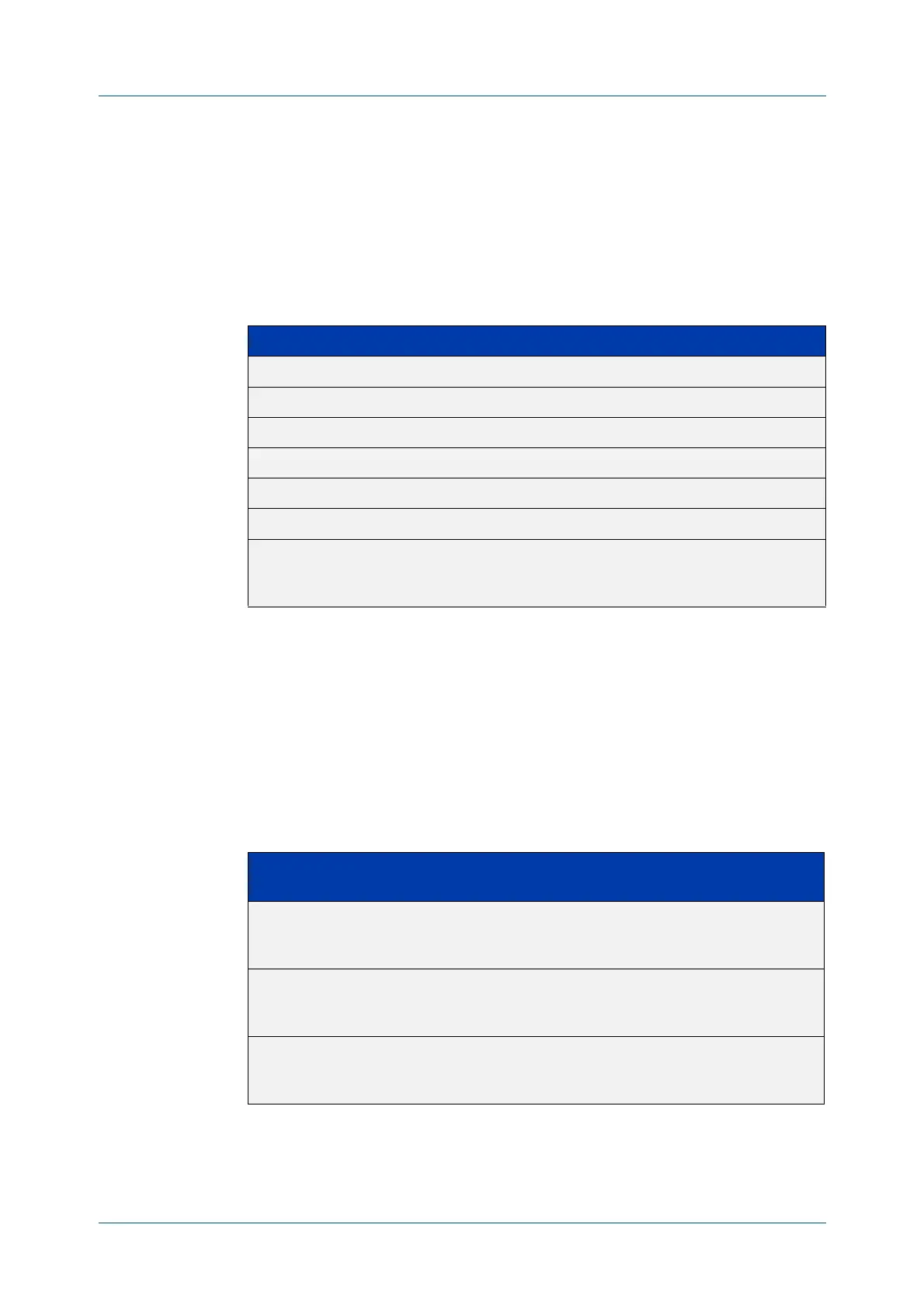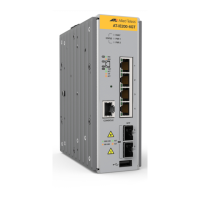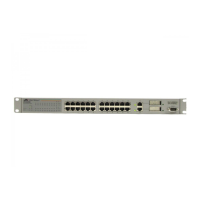C613-50631-01 Rev A Command Reference for IE340 Series 2140
AlliedWare Plus™ Operating System - Version 5.5.3-0.x
QOS COMMANDS
POLICE
TWIN-RATE ACTION
police twin-rate action
Overview Configures a twin-rate policer for a class-map.
Syntax
police twin-rate <cir> <pir> <cbs> <pbs> action
{drop-red|remark-transmit}
Mode Policy Map Class Configuration
Usage notes A policer can be used to meter the traffic classified by the class-map and as a result
will be given one of three bandwidth classes. These are green (conforming), yellow
(partially- conforming), and red (non-conforming).
A twin-rate policer is based on four values. These are the minimum rate (CIR),
minimum burst size (CBS), maximum rate (PIR), and maximum burst size (PBS). The
following table shows how these values define the bandwidth classes.
Using an action of drop-red means that any packets classed as red will be
discarded.
Parameter Description
<cir> Specify the Committed Information Rate (CIR) (1-100000000 kbps).
<pir> Specify the Peak Information Rate (PIR) (1-100000000 kbps).
<cbs> Specify the Committed Burst Size (CBS) (0-16777216 bytes).
<pbs> Specify the Peak Burst Size (PBS) (0-16777216 bytes).
action Specify the action if rate is exceeded.
drop-red Drop the red packets.
remark-transmit Modify the packets using the remark map, then
transmit. You can configure the remark map
using the remark-map command.
Bandwidth
Class
Definition
green The sum of the number of existing (buffered) bytes plus those arriving
at the port per unit time results in a value that is less than that set for
the CBS.
yellow The sum of the number of existing (buffered) bytes plus those arriving
at the port per unit time results in a value that is between those set for
the CBS and the PBS.
red The sum of the number of existing (buffered) bytes plus those arriving
at the port per unit time results in a value that exceeds that set for the
PBS.

